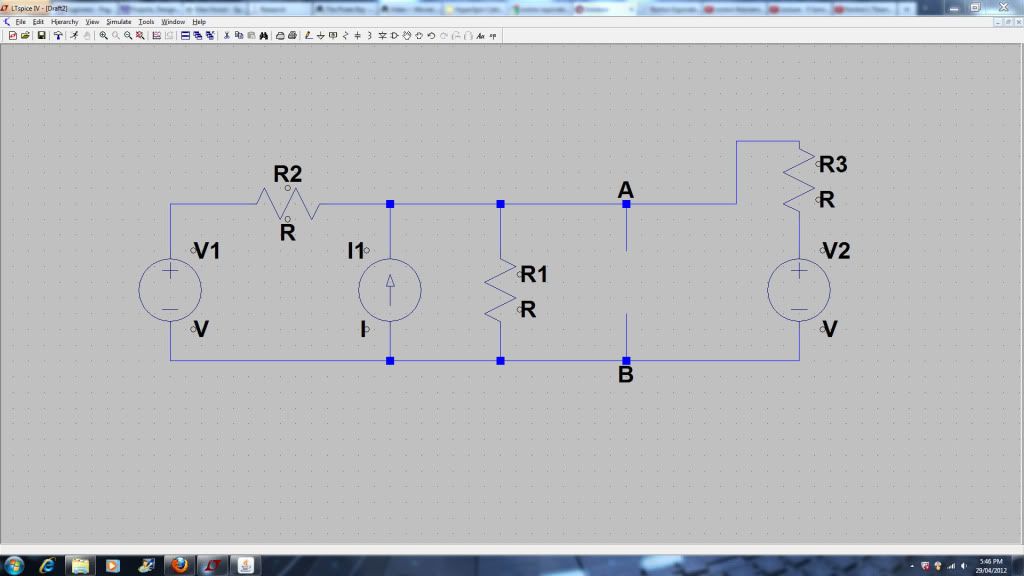Hi all,
I'm here again in regards to a question I have involving Norton's Theorem this time.
I know some expressed their concerns about getting other people to "do" my homework last time. This was never the case, though as a precaution I have left out all of the values from the circuit below to avoid any turmoil. I am stumped and would just like some advice from those who are willing to help.

The question asks to determine the Norton equivalent at AB, from the circuit above.
With the notes I have, along with reading around online and through some textbooks, I haven't seen any examples where they're analyzing a circuit with the subjected terminals in the middle of the network. It's throwing me off a little..
Can anyone confirm if I'm going about this the right or wrong way please?
Firstly, convert the voltage sources to current sources which turns the circuit into 3 current sources and 3 resistors all in parallel.
Then algebraically add the current sources, followed by adding all parallel resistors (once current sources become open circuit for analysis).
Leaving a single current source with a single resistor in parallel.
Any help is most appreciated.